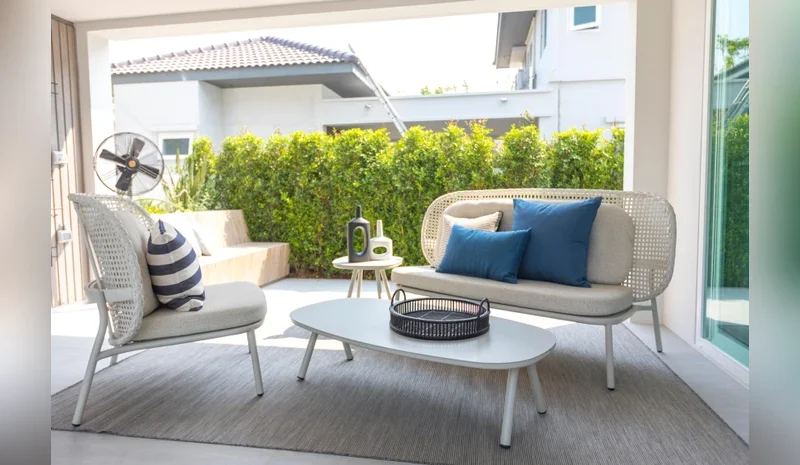From earth tones to bright hues, alpaca wool to pure silk, handmade shawls are a wonderful way to introduce colour and class into your wardrobe
Shawls are often regarded as heirlooms, passed on from one generation to the next. This is especially pashminas whose soft fabric, heavenly feel and great workmanship make them extra special. They are the quintessential ‘haath ka kaam’ or handmade and handcrafted stuff as every shawl is a labour of love and each piece takes anything from a few weeks to a few months, and sometimes years to make. They lend style, comfort and a unique flair to a woman’s wardrobe, and no two pashmina shawls are ever the same even if their embroidery and colour match.
Says Bhuvan Ahuja of Ahujasons: “There was a time when stoles and scarves became increasingly popular, but during the past 6-7 years, people have gradually moved back to shawls and started appreciating them for both aesthetics and functionality. Shawls are, after all, larger in size and are the only fabric that can be used to wrap your entire body. When it comes to any look–be it elegant, formal, casual or party wear–shawls tend to stand out and exude a certain feel.”
Explaining that shawls can be explored in many ways and encapsulate a variety of concepts–something that is a limitation with stoles and scarves–Ahuja adds,” At Ahujasons, we went in for contemporary design and techniques evolving the shawl from just a mummy’s item, something that only my nani dadi would wear to something that young people would aspire to embrace.”
What’s trending
Favourite colour choices for shawls have been the neutral and essential shades of beige, fawn and black. The motif language transcends the traditional paisley, teardrop or buteh to modern geometric prints like diamonds or stripes, which can be easily paired up with western outfits as well.
Must-haves in your closet: Some must-have shawls would be classic Pashmina, which epitomises the history of Kashmiri craftsmanship. Now even Pashminas are coming not only in traditional designs but also in abstracts, chic, stripes, and other embellishments. Another famous shawl to have would be a Kani. It’s one of the most visible shawls among the royals and aristocrats. At elaborate Indian winter weddings, a Kani shawl is the most prevalent.
Rashmi Shukla, Business Head, JAYPORE, Aditya Birla Fashion and Retail Limited (ABG group), says these crafts have stood the test of time, and continue to be loved for their finesse and elegant warmth. She adds: “Kani weaving is a centuries old craft that uses wooden needles to weave vibrant traditional patterns. It has been passed down the generations, and is still practised widely in Kashmir. There are different variations of Kani shawls, like the Kani Jamawar shawls that can even take up to 2 years to weave.”
Pashminas can accompany both, the traditional Indian and western silhouettes, and are used to style ensembles for formal as well as casual occasions. These shawls are very versatile in that sense.
Shawls have transformed significantly over the years. Says designer Khushi Shah of Shanti Banaras: “Years ago, shawls were seen as classic heirloom pieces that were only worn on grand occasions. Now they have also been redesigned to cater to everyday usage. They have become less blingy. However at Shanti, we are working with heavy embroideries to restore the heritage and art of the classic era. What I am seeing is various experiments with shawls, such as stitching the silhouette as a jacket, turning it into an overlapping jacket shawl, kimono shawl, such trends are very popular amongst the millennials.”
Shawls make a statement with both, Indian and western wear. There are various ways in which you can style them. Says designer Archana Jaju, “There are multiple ways one can carry it too. One could don it in the usual manner by draping it around the shoulder or could experiment by draping it like a poncho or shrug as well.”
Is it better to contrast or match the colour? If one wants to create an understated and subtle appeal, then going for a similar colour shawl is better as it doesn’t overpower the outfit. Whereas, if it’s a plain black kurta, adding a contrasting shawl will uplift its appearance and add a pop of colour to it. A shawl is the best accessory to add to one’s attire on chilly days. It instantly elevates the look and almost all age groups can carry it.
“Our hand painted shawls when worn over a sari just exudes elegance. We also have shawls with Zardosi and Parsi gara work that can be worn in a contemporary manner such as belting it up to give it a unique silhouette and a modern twist,” says Jaju.
Reasons for buying
Retailers generally plan their inventory one year ahead as it takes anything from a month to two years to make a piece, depending upon the intricacy of work. Luckily for them, nothing goes out of fashion as each piece is timeless. If it doesn’t sell one season, it will sell the next or find takers in the export market.
So, what are the right reasons for buying a shawl? It is investing in a thing which can be passed on to your sons and daughters. Weddings are the big reason why people buy shawls apart from honouring someone in cultural events. Retailers share that there are two kinds of customers – while 40 per cent of customers are the loyal customer base who invest in upgrading their wardrobe with one expensive shawl each year, the rest 60 percent buy as per the occasion in the family such as weddings, anniversaries and milestone events.
Anybody who wants to start on with investing in a good shawl must begin with Kanis (Rs 80,000-1,50,000) as these are a must-have in a wardrobe shawl and are versatile and colourful, says Bhuvan Ahuja. The classic staples that rule are Jamawars and it is for the person who appreciates the karigari or the artisans work because the finer you go in the stitch, the pricier it gets.
At Ahujasons, one of the most popular techniques is the kalamkari one, which is hand painting on Kashmiri pashmina fabric and then hand silk embroidery on top of that. Says Bhuvan Ahuja, “When it comes to designing our shawls, we take our inspiration from history, especially the Mughal era, the Persian dynasty, the British dynasty. We tend to focus on heritage rather than abstract designs.” He shares the younger lot love their “tree of life, rangoli collection which is an adaptation of rangoli colours and motifs during Diwali, the sheesh mahal inspired design that uses mirror to create geometrical designs with motifs in between patchwork, the papier Mache-inspired from Kashmir which has detailing of every single motif.
Maintenance
A little care goes a long way in promoting the longevity and texture of your shawl. Says Jaypore’s Shukla: “The wisdom of our grandmothers stays true to this, that shawls need to be delicately handled. They should be dry cleaned, stored carefully in separate muslin bags as they are most prone to moth infestations. It is best to keep them away from aromatic products including naphthalene balls.”
Here are some tips to maintain the longevity of your favourite pashmina shawls. Always take your shawl to a professional dry cleaner, as wringing or rubbing might damage the fine pashmina fibres in your shawl. When it’s summer, store your pashmina shawl in a muslin bag or cloth. Do not use plastic for long term storage as it could damage the beauty of your shawl. Contrary to popular belief, do not place naphthalene balls or cakes pressed against the wool of your pashmina shawl. Not only do they lead to a foul smell but also the chemicals in such products might end up damaging the texture of your shawl. Use steam while ironing wool and make sure you set the temperature setting to “wool” on your steam iron. Use standardised ironing equipment as overheating might harm your pashmina shawl. Like all expensive things, it is always advisable to get your pashmina shawl through a professional restoration process once in a few years.
Table: Indicative prices of shawls
| Type of Shawl | Price Range (Rs) |
|
Plain Solid Pashmina |
3,500-17,500 |
| Kani Pashmina | 80,000-1.5 lakh |
| Kalamkari Pashmina | 75,000-7 lakh |
| Papier Mache | 80,000-1.5 lakh |
|
Jamawar Pashmina |
1-3 lakh |
| Contemporary Pashmina | 3,800-1.7 lakh |
|
Reversible Pashmina |
11,500-38,000 |
| Handloom Pure Pashmina Shawl | 7,250-5.75 lakh |
| Woollen Shawl | 2,000-23,000 |
| Woollen Stole | 2,000-5,500 |
| Pashmina Stole | 6,000-12,750 |
Credit: Market Research





Hey! Someone in my Myspace group shared this site with us so I came to check it out. I’m definitely loving the information. I’m book-marking and will be tweeting this to my followers! Wonderful blog and brilliant design.